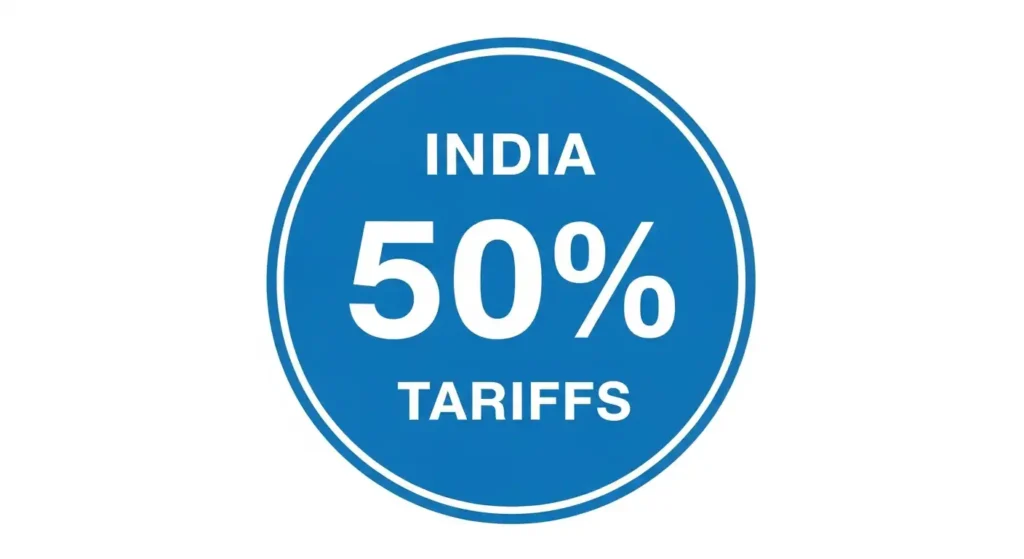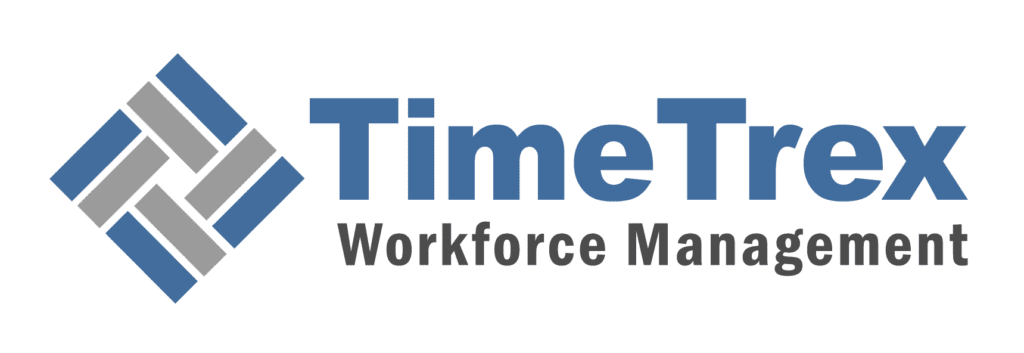
US Increases India's Tariffs to 50%
Article Index
- Anatomy of a Trade Shock: The 2025 U.S. Tariffs on India
- The Rationale Re-examined: Geopolitics, Oil, and Enduring Trade Frictions
- Economic Tremors in India: A Sectoral Impact Analysis
- India's Response: A Strategy of Resilience and Realignment
- The Ripple Effect: Economic Consequences for the United States
- The Geopolitical Fallout: Trust, Strategy, and the Future of a Key Partnership
- Conclusion: Navigating the New Reality and Strategic Recommendations
TL:DR
In August 2025, the U.S. imposed a crippling 50% tariff on Indian exports, escalating a long-standing trade dispute into a major geopolitical crisis. This aggressive US-India tariff, officially justified by India's procurement of Russian crude oil, threatens to devastate India's labor-intensive sectors and has shaved projected GDP growth. For the U.S., the 50% tariff is fueling consumer price inflation and slowing economic growth, demonstrating the significant blowback of such trade policies. India has responded not with retaliatory tariffs, but with a strategy of domestic economic strengthening and accelerated diversification of its export markets. This US-India trade crisis represents a strategic miscalculation, sacrificing a key geopolitical partnership for questionable short-term trade leverage and undermining the U.S. Indo-Pacific strategy.
Anatomy of a Trade Shock: The 2025 U.S. Tariffs on India
The trade action undertaken by the United States against India in August 2025 was not a singular, monolithic event but a layered policy instrument constructed in two distinct phases. This structure, combining broad trade philosophy with specific geopolitical penalties, created a uniquely complex and challenging diplomatic environment. Understanding the mechanics, legal framework, and implementation timeline of these US-India tariffs is essential to grasping the full scope of the ensuing crisis.
The Two-Tiered Tariff Structure: From Reciprocity to Penalty
The cumulative 50% tariff that came into effect on August 27, 2025, was the result of two separate 25% ad valorem duties imposed in quick succession. This two-tiered approach reflects the dual motivations behind the administration's policy, targeting both long-standing trade grievances and more immediate geopolitical considerations.
The first tranche was a 25% "reciprocal" tariff, announced at the end of July 2025 and made effective on August 7. This levy was not exclusive to India but was part of a wider trade policy aimed at countries perceived to have imbalanced trade relationships and high barriers to U.S. goods. The administration's narrative, frequently invoking the label of India as the "tariff king," positioned this initial measure as a necessary step to level the playing field. The second tranche, an additional 25% duty, was a punitive "penalty" tariff specifically linked to India's continued purchase of discounted crude oil from the Russian Federation. This hybrid structure positioned the tariffs not merely as a tool of commercial policy but as an instrument of coercive diplomacy.
Legal Underpinnings: Dissecting Executive Order 14329
The legal authority for the second 25% penalty tariff was derived from Executive Order 14329, signed by President Trump on August 6, 2025. The order explicitly connects the tariffs on India to the national emergency declared in a prior executive order, E.O. 14066. By linking India's commercial energy transactions to a pre-existing national emergency concerning Russia, the administration sought to justify the punitive tariffs as a measure to counter a threat to U.S. national security and foreign policy. This legal maneuver is a hallmark of the administration's approach to trade, using national security justifications to bypass traditional trade negotiation frameworks.
Implementation and Timeline: The Role of CBP and Homeland Security
The operationalization of the tariffs was delegated to the U.S. Department of Homeland Security and U.S. Customs and Border Protection (CBP). Official notices published in the Federal Register confirmed the new duties would apply to all designated products of India "entered for consumption, or withdrawn from warehouse for consumption, on or after 12:01 a.m. Eastern Daylight Time on August 27, 2025". A minor concession was included, providing a brief grace period for goods already in transit, which would not face the penalty tariff if entered for consumption by September 17, 2025.
| Tariff Component | Ad Valorem Rate | Legal Basis / Executive Order | Effective Date | Official Justification |
|---|---|---|---|---|
| "Reciprocal" Tariff | 25% | General Trade Policy | August 7, 2025 | High Indian tariffs on U.S. goods; trade imbalance |
| "Penalty" Tariff | 25% | Executive Order 14329 | August 27, 2025 | India's direct or indirect purchase of Russian crude oil |
| Combined Total | 50% | N/A | August 27, 2025 | Combination of the above justifications |
The Rationale Re-examined: Geopolitics, Oil, and Enduring Trade Frictions
While the administration presented a clear public-facing justification for the punitive 50% tariffs, a deeper analysis reveals a complex interplay of geopolitical maneuvering, long-simmering trade disputes, and strategic inconsistencies. The official rationale centered on India's energy relationship with Russia, but this narrative served as a convenient justification for addressing underlying economic grievances.
The Official Justification: India's Russian Oil Imports as a National Security Threat
The primary reason for the additional 25% penalty tariff was India's significant increase in crude oil imports from Russia. The argument was that India's purchases provided a vital revenue stream to Moscow, thereby indirectly funding the Russian war effort. This justification allowed the administration to position the tariffs not as a mere trade dispute, but as a necessary action in a broader geopolitical struggle.
The Underlying Drivers: Market Access and the "Tariff King" Narrative
Beneath the surface of the national security argument lay a foundation of deep and persistent trade frictions. A primary sticking point in stalled bilateral trade agreement negotiations was the persistent U.S. demand for greater market access to India's highly protected and politically sensitive agriculture and dairy sectors. The oil issue provided a powerful new justification to escalate pressure on India to concede on these long-standing trade demands.
A Policy of Inconsistency? Comparing the U.S. Approach to India vs. China and EU Allies
The credibility of the U.S. national security rationale was significantly undermined by its inconsistent application. China, the world's largest importer of Russian oil, was conspicuously spared a similar penalty tariff. In a stunning move, the administration postponed a planned tariff hike on Chinese goods, maintaining the rate at 30%—far below the new 50% rate imposed on India. This selective targeting suggested the rationale was less about a principled stand on sanctions and more about using the oil issue as a pretext to punish India for its independent foreign policy posture.
Economic Tremors in India: A Sectoral Impact Analysis
The imposition of a 50% tariff by the United States, India's largest export market, has sent severe economic shockwaves across the Indian economy. The impact is a highly targeted action designed to inflict maximum pressure on specific, vulnerable sectors of the Indian industrial landscape.
Macroeconomic Projections: Quantifying the Impact on GDP and Trade Balance
Consensus estimates suggest a reduction in India's Gross Domestic Product (GDP) growth for the fiscal year 2026 ranging from 0.4 to 0.5 percentage points, with worst-case scenarios projecting a drag of up to 1.0 percentage point. The Global Trade Research Initiative (GTRI) projects a catastrophic decline in exports from the affected sectors, potentially collapsing by as much as 70%, which would translate into an overall 43% reduction in India's total shipments to the U.S.
The Front Lines: Labor-Intensive Sectors Under Siege
The tariffs are disproportionately aimed at India's most labor-intensive industries, where millions of jobs are concentrated. Key sectors facing an existential crisis include Textiles and Apparel, Gems and Jewelry, Seafood (Shrimp), and Leather and Footwear. The 50% tariff creates a massive cost disadvantage, making exports commercially unviable and threatening to paralyze major manufacturing hubs and impact hundreds of thousands of workers directly.
The Strategic Exemptions: Why Pharmaceuticals and Electronics Were Spared
In stark contrast, the U.S. administration carved out critical exemptions for sectors like pharmaceuticals and electronics, including smartphones. This was a calculated move to insulate the U.S. economy from the most severe consequences. India is a cornerstone of the U.S. healthcare system, supplying roughly half of all generic medications. Similarly, India has recently surpassed China as the leading exporter of smartphones to the U.S., many of which are iPhones. Taxing these products would have directly raised prices for American consumers and disrupted the supply chain of a flagship American technology company.
| Sector | FY2025 Export Value to U.S. (Approx.) | Applicable Tariff Rate | Projected Export Decline (GTRI Est.) | Key Competitor Nations Benefitting |
|---|---|---|---|---|
| Textiles & Apparel | $10.3 billion | 50% | Up to 70% | Vietnam, Bangladesh, Mexico |
| Gems & Jewelry | $10.0 billion | 50% | Up to 70% | Israel, Belgium, Turkey, Vietnam |
| Seafood (Shrimp) | ~$3.0 billion | 50% | Up to 70% | Ecuador, Indonesia, Vietnam |
| Leather & Footwear | Not specified | 50% | Significant decline | European, Southeast Asian, Mexican producers |
| Pharmaceuticals | $8.7 billion | 0% - Exempt | N/A | N/A |
| Electronics/Smartphones | $10.56 billion (smartphones only) | 0% - Exempt | N/A | N/A |
India's Response: A Strategy of Resilience and Realignment
Faced with this significant trade challenge, the Indian government has crafted a multi-faceted response characterized by a deliberate decision to avoid direct, tit-for-tat tariff retaliation. Instead, India has focused on a combination of domestic economic fortification and aggressive international trade diversification.
Domestic Fortification: GST Reform and the Export Promotion Mission
The core of India's practical response has been to turn inward. The government is accelerating a major overhaul of its Goods and Services Tax (GST) system to simplify the structure and cut rates, aiming to stimulate domestic demand. Simultaneously, the Commerce Ministry is fast-tracking a ₹25,000-crore (approximately $2.8 billion) Export Promotion Mission to provide direct support to affected businesses through enhanced access to trade finance and regulatory relief.
Pivoting Away: The Global Hunt for New Markets
Beyond domestic measures, India has initiated an aggressive campaign to diversify its export markets, reducing its long-term dependence on the U.S. The Commerce Ministry has launched targeted outreach programs aimed at 40 major markets across the globe. Integral to this strategy is a renewed urgency in concluding ongoing negotiations for Free Trade Agreements (FTAs) with partners like the UK and the EU.
Calculate the Impact of New Tariffs on Your Business
Understand how the evolving US-India trade crisis could affect your bottom line. Use our comprehensive tool to model different scenarios and plan your strategy.
Access the U.S. Tariff CalculatorThe Ripple Effect: Economic Consequences for the United States
The administration's decision to impose steep tariffs was not a cost-free action. The economic consequences have begun to ripple back into the United States, manifesting as heightened inflationary pressures, direct price increases for consumers, and a projected slowdown in overall economic growth.
The Consumer Cost: Inflationary Pressures and Price Hikes
The most direct impact of the tariffs on the U.S. is on consumer prices. The 50% levy on a wide range of Indian imports, including everyday items like apparel, footwear, and home furnishings, is expected to have significant repercussions for American households. Analysts at Goldman Sachs project that the core PCE price index, a key inflation metric, will rise, with a significant portion of the increase directly attributable to the tariffs.
Macroeconomic Blowback: Projected Impacts on U.S. GDP and Employment
The inflationary effects are coupled with a projected drag on overall economic activity. The Yale Budget Lab estimates a significant negative impact, projecting a reduction in U.S. real GDP growth by 0.5 percentage points in both 2025 and 2026. The analysis also projects that the national unemployment rate will be 0.7 percentage points higher by the end of 2026, translating into a significant number of jobs lost or not created.
| Economic Indicator | Source / Think Tank | Projected Figure / Range |
|---|---|---|
| India GDP Growth Impact | GTRI / Economists | -0.4% to -1.0% |
| India GDP Growth Impact | ICRIER | -1.56% of GDP (direct export value) |
| U.S. GDP Growth Impact | Yale Budget Lab (TBL) | -0.5 percentage points in 2025 & 2026 |
| U.S. GDP Growth Impact | State Bank of India (SBI) | -0.4% to -0.5% |
| U.S. Core PCE Inflation | Goldman Sachs | Increase to 3.2% year-on-year (tariffs a key driver) |
| U.S. Unemployment Rate | Yale Budget Lab (TBL) | +0.7 percentage points by end of 2026 |
The Geopolitical Fallout: Trust, Strategy, and the Future of a Key Partnership
Beyond the quantifiable economic consequences, the 2025 U.S. tariffs on India have inflicted deep and potentially lasting damage on the strategic relationship. The move has been widely interpreted as a fundamental challenge to a partnership that has been carefully cultivated as a cornerstone of American foreign policy in Asia.
Erosion of Trust: Undoing a Generation of Strategic Convergence
A powerful consensus has emerged among foreign policy experts that the tariffs have severely depleted the reservoir of trust built over the last two decades. The unilateral and punitive nature of the action is viewed as a significant strategic miscalculation, stemming from a flawed assumption that India would bow to economic pressure. This misunderstands India's long-standing foreign policy tradition of "strategic autonomy."
A Contradiction in Strategy: The Tariffs vs. the Indo-Pacific Agenda
The tariff policy exhibits a profound and self-defeating strategic incoherence. The central pillar of U.S. strategy in Asia has been the nurturing of India's rise as a democratic counterweight to China. Punishing a key partner in the Quadrilateral Security Dialogue (Quad) weakens the very coalition the U.S. has worked to assemble. By imposing harsher tariffs on democratic India than on its primary strategic rival, the U.S. has upended the foundational logic of its own Indo-Pacific strategy.
Conclusion: Navigating the New Reality and Strategic Recommendations
The imposition of 50% tariffs marks a watershed moment in the US-India relationship, initiating a lose-lose dynamic that inflicts significant economic damage on both nations while undermining long-term geopolitical objectives. Navigating the aftermath requires a fundamental reset from both sides to rebuild a more resilient and realistic partnership.
The geopolitical damage is arguably more severe than the economic shock. The action has created a deep rift with a critical democratic partner, eroding a generation's worth of trust-building. A return to the status quo ante is unlikely, but a pathway to de-escalation exists through strategic recalibration. For India, the crisis must be a catalyst for accelerating market diversification and deepening domestic reforms. For the United States, the path forward requires a return to strategic pragmatism, realigning its trade policy with its broader strategic goals and recognizing that the long-term benefits of partnership far outweigh the short-term gains of unilateral coercion.
Disclaimer: The content provided on this webpage is for informational purposes only and is not intended to be a substitute for professional advice. While we strive to ensure the accuracy and timeliness of the information presented here, the details may change over time or vary in different jurisdictions. Therefore, we do not guarantee the completeness, reliability, or absolute accuracy of this information. The information on this page should not be used as a basis for making legal, financial, or any other key decisions. We strongly advise consulting with a qualified professional or expert in the relevant field for specific advice, guidance, or services. By using this webpage, you acknowledge that the information is offered “as is” and that we are not liable for any errors, omissions, or inaccuracies in the content, nor for any actions taken based on the information provided. We shall not be held liable for any direct, indirect, incidental, consequential, or punitive damages arising out of your access to, use of, or reliance on any content on this page.
About The Author

Roger Wood
With a Baccalaureate of Science and advanced studies in business, Roger has successfully managed businesses across five continents. His extensive global experience and strategic insights contribute significantly to the success of TimeTrex. His expertise and dedication ensure we deliver top-notch solutions to our clients around the world.
Time To Clock-In
Start your 30-day free trial!
Experience the Ultimate Workforce Solution and Revolutionize Your Business Today
- Eliminate Errors
- Simple & Easy To Use
- Real-time Reporting

Saving businesses time and money through better workforce management since 2003.
Copyright © 2025 TimeTrex. All Rights Reserved.
